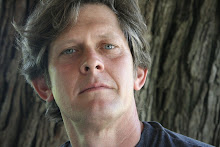
Today's newspaper column: (Read it in the Hattiesburg American.)
You’ve heard of Leonardo da Vinci; he’s the guy who created the world’s most famous painting: the Mona Lisa.
But did you know that Leonardo embraced what we now consider a green lifestyle? And are you aware that, over five centuries ago, he articulated a way of holistic thinking that matches up perfectly with the principles of sustainability?
Born into the Dark Ages, Leonardo (1452 – 1519) ushered in an age of open-minded thinking that changed the course of history. In the thousand years before Leonardo (with notable exceptions of the windmill and the gothic cathedral) not much happened that was new and innovative. The groupthink of the day was “everything worthwhile had already been thought of or invented; only fools waste time and effort in the pursuit of new ideas.” Leonardo rejected that stagnant way of thinking.
In his day, Leonardo was famous for his amazing strength and dexterity. So extraordinary was his grace and poise, that people would peer out their windows just to watch him walk down the street. Leonardo consciously cultivated total body fitness centered on aerobic conditioning and daily stretching exercises (twenty-first century translation: yoga) along with diet – Leonardo was a strict vegetarian. He ate a high-fiber diet consisting of fresh vegetables, legumes, olive oil, and plenty of water. And lest you think a vegetarian diet results in frailty or weakness, Leonardo was legendary for being able to bend horseshoes with his bare hands and for stopping horses in full gallop by catching hold of their reins.
Leonardo was guided by an insatiable curiosity. Never satisfied with the status quo, he always pushed forward seeking a greater and truer understanding of the issue at hand. Leonardo was an advocate of lifelong learning, asking confounding questions and seeking answers up until the day he died. And learning through demonstration was Leonardo’s highest truth. He didn’t take the word of “experts” as sacrosanct. In Leonardo’s world, personal experience, testing, and a willingness to learn from mistakes trumped established authority.
Leonardo practiced the art of refinement of the senses. To understand something fully, he encouraged others to pay special attention to seeing, touching, hearing, smelling, and tasting to heighten the experience, and thus lead to a greater understanding of how things are and how things work.
Rather than looking at dichotomies (it’s either this or that) Leonardo embraced ambiguity and uncertainty, and he recognized and appreciated the interconnectedness of all things. In the world of sustainability, we call this “systems thinking.”
And finally, Leonardo sought in all things to achieve a balance of art and science, a synthesis of imagination and logic, in an act of whole-brain thinking that allowed him to navigate past prejudices and biases that all too often stand in the way of seeing the world as it is, not just as one wants it to be.
We can’t all be Leonardos, but with a little help from the original “Renaissance Man” we can begin to see the forest AND the trees.




1 comment:
This is great! Thanks.
Post a Comment